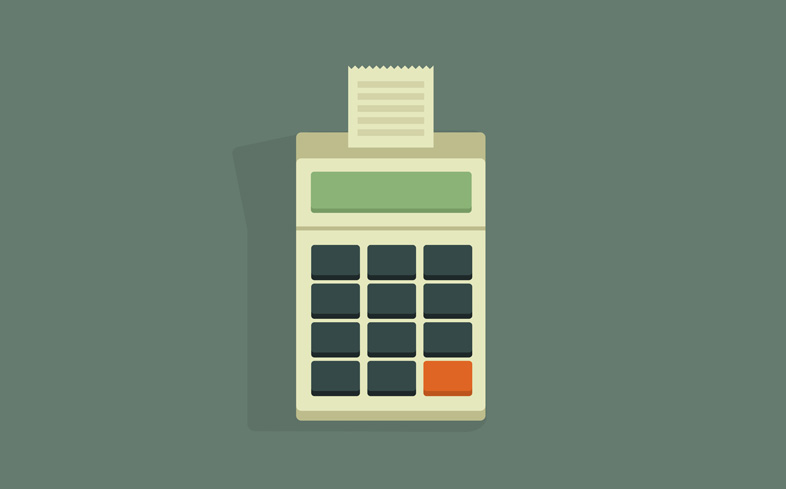How to Save & Invest for Retirement
It’s easy to get lost in the world of retirement planning.
There are so many aspects to this essential process that it can be overwhelming to start saving and investing for your nest egg.
We’ve outlined the most important concepts to understand in order to successfully tackle retirement planning.
1. What exactly are retirement investment accounts?

Retirement accounts are investment accounts designed to help Americans save for retirement.
You add money to these accounts and buy assets like stocks, bonds, mutual funds, and CDs.
Retirement plans have several advantages that help you save more money than if you just tried to reach your retirement goals with a regular bank account or stock brokerage account.
Some of the possible benefits of retirement plans include tax deductions, delayed taxes on your investment earnings, and extra payments from your employer into your plan.
In exchange, these plans have limits on when you can take out your money.
If you want to take out money before you retire or turn 59 1/2, you could owe extra tax penalties.
Why it’s important
Saving for retirement is incredibly important. People are living longer than ever, which means longer retirements.
At the same time, fewer companies offer guaranteed pensions while the finances behind Social Security are a bit uncertain.
For most people to reach their retirement goals, they also need to build their personal savings through retirement accounts.
What you should consider
As you figure out how much to add to your retirement plan, you need to consider when to retire. The earlier you want to retire, the more you need to save per year to reach your goal.
Also, consider what kind of lifestyle you’d like in retirement. Do you want to travel and be very active, or do you want a simple, inexpensive retirement?
If you’re planning on working during retirement, you could get away with saving a little less.
You should also consider whether you might need your money before retirement.
It’s important to still have an emergency fund outside of your retirement plans so all your money isn’t locked up.
2. Different types of retirement accounts

Individual retirement accounts
Individual Retirement Accounts (IRAs) are retirement plans you can open up by yourself, outside of your place of employment.
When you invest in an IRA, you don’t have to pay taxes on your investment gains until you take money out.
However, you need to keep your money in the IRA until you turn at least 59 1/2 or you could owe taxes and penalties to the IRS.
There are two main types of IRAs (other IRAs exist but are much less common):
- Traditional IRA
- Roth IRA
These accounts offer tax deductions at different times, which we’ll cover more in the next section.
Work retirement accounts
Employers offer work retirement accounts, like 401(k) plans, as extra compensation for their employees.
These plans offer the same sort of benefits as IRAs, like delayed taxes on your investment earnings and tax deductions for your contributions.
The amount you can contribute per year depends on how your employer set up the plan but often it’s more than the IRA limit.
Also, some employers offer matching contributions. They give you extra money when you invest in your work retirement plan.
For example, your employer might add 50 cents for every dollar you contribute to your 401(k) plan.
Self-employed retirement accounts
If you’re self-employed, you can open a SEP IRA or Simple IRA for yourself.
These types of retirement plans have the same tax benefits as regular IRAs but you can add more per year into these accounts.
However, if you hire employees for your business, you may have to give them money for their retirement accounts whenever you add money to your own account.
3. Roth vs. Traditional (two of the most common accounts)

Traditional IRA
The Traditional IRA gives you a tax break right away.
The money you add to your Traditional IRA will be deductible when you file your taxes at the end of the year.
You’ll pay less in taxes this year just for setting aside money for retirement.
In exchange, when you withdraw money in retirement, you’ll need to pay income taxes on everything you take out.
Roth IRA
The Roth IRA delays its tax deduction until retirement.
You need to put after-tax dollars into this account, so investing in a Roth IRA won’t lower your taxes while you’re working.
In exchange, when you take money out of this account in retirement, the withdrawal is tax-free.
You’ll never have to pay taxes on your investment earnings and will have tax-free income coming in during retirement.
The best retirement plan for you
The best retirement account really depends on your personal situation.
The Traditional IRA works well when you’re in a very high tax bracket while working because you’re saving more with the tax deduction.
If you’re in a lower tax bracket, the Roth IRA looks a bit better because you aren’t getting as much from the Traditional.
If you’re in a 35 percent tax bracket, you save 35 cents for every dollar put into the Traditional IRA compared to 15 cents for someone in a 15 percent tax bracket.
The Roth IRA makes more sense when you’re younger.
Since your investments have more time to grow, you’ll save more on your retirement taxes with the Roth.
At the same time, the closer you get to retirement, the more the Traditional makes sense.
Choosing a retirement account is a big decision but if you keep these trade-offs in mind, you should be able to successfully compare the retirement plans.
4. When should you start saving?

Basically, start saving as soon as you possibly can.
The sooner you start saving for retirement, the more time your investments will have to grow.
Think of investing like pushing a big boulder. It’s tough at the beginning but once the boulder gets moving, it basically runs itself.
For example, if you start saving $3,000 a year when you’re 25 and only save for 10 years until you turn 35, you’ll most likely have more money in retirement than someone who starts saving $3,000 a year at 35 and saves for 30 years.
How much should I save for retirement?
This depends on your budget but more is better.
Saving more gives you more options in the future, while saving too little can get you in trouble when you’re not able to work or earn as much.
If your employer offers a matching contribution to your 401(k) plan, at a minimum, save until you’ve gotten all this free money.
Another good target is to save at least 10 percent of your income each year for retirement.
When should I retire?
Once again the best retirement age really depends on your own goals.
The key is if you save early and often, you can make this decision yourself.
Too many people are stuck delaying retirement because they haven’t saved enough.
If you want to retire early, you need to save much more per year than someone who doesn’t want to retire early or plans to work a little during retirement.
Also, if you want to retire really young, keep in mind that you can only take money out of your IRAs when you turn 59 ½ and out of your 401(k) when you turn 55.
If you want to retire earlier than this, you should invest some money outside of retirement plans.
5. How to contribute & how much to contribute

Opening up an IRA is very simple — you just need to contact a brokerage, like Fidelity or Vanguard, and tell them that you want to invest through an IRA.
There shouldn’t be a cost to set up this account.
Then, when you buy stocks, mutual funds or anything else from your broker, you can tell them to put those assets in your IRA.
If you want to invest through a work retirement plan like a 401(k), your company needs to offer one.
If they do, your HR department should be able to tell you the rules and how to set up deposits from your paycheck into the retirement plan.
401(k) contribution limits
For 2024, the contribution limits employees can add to their 401(k), 403(b), most 457 plans, and the federal government’s Thrift Savings Plan for the year is $23,000.
You can make changes to your 401(k) contribution amount any time of the year — not just during open enrollment season.
IRA contribution limits
There is no official minimum IRA contribution. However, your broker might have a minimum requirement for transactions.
For example, if you want to buy stock, your broker might require that you buy at least $100 worth or it won’t accept the transaction.
There are maximum IRA contribution limits.
As of 2024, you can invest up to $7,000 a year into an IRA if you are younger than 50 and up to $8,0500 if you are 50 or older.
Also, if you are single and make more than $161,000 or are married and make more than $240,000 combined, you can’t use the Roth IRA.
Traditional IRA vs. Roth IRA: Limits & Rules (2020)
| Traditional IRA | Roth IRA | |
|---|---|---|
| 2020 Contribution Limits | $6,000 if younger than 50; $7,000 if age 50 or over | $6,000 if younger than 50; $7,000 if age 50 or older |
| 2020 Income Limits | Anyone with earned income can contribute, but tax deductibility is based on income limits and participation in an employer plan | Single tax filers with modified AGIs of less than $139,000 (phase-out begins at $124,000); married couples filing jointly with modified AGIs of less than $206,000 (phase-out begins at $196,000) |
| Tax Treatment | Tax deduction in contribution year; ordinary income taxes owed on withdrawals | No tax break for contributions; tax-free earnings and withdrawals in retirement |
| Withdrawal Rule | Withdrawals are penalty free beginning at age 59 1/2; distributions must begin at age 70 1/2 – beneficiaries pay taxes on inherited IRAs | Contributions can be withdrawn at any time, tax-free and penalty free (five years after your first contribution and age 59½, earnings withdrawals are tax-free as well); no withdrawals required during account holder’s lifetime – beneficiaries can stretch distributions over many years |
IRA contribution deadline
The contribution deadline for adding money to an IRA is the same deadline for filing your tax returns of the following tax year.
For example, if you’re trying to max out your IRA contributions, you typically have until April 15th to contribute for the previous tax year.
After this deadline, you lose all unused potential contributions. You can’t skip a year of contribution and then try to make it up in the following year. This is why it is important to contribute while you still can (in case your income exceeds the contribution limits in the future).

